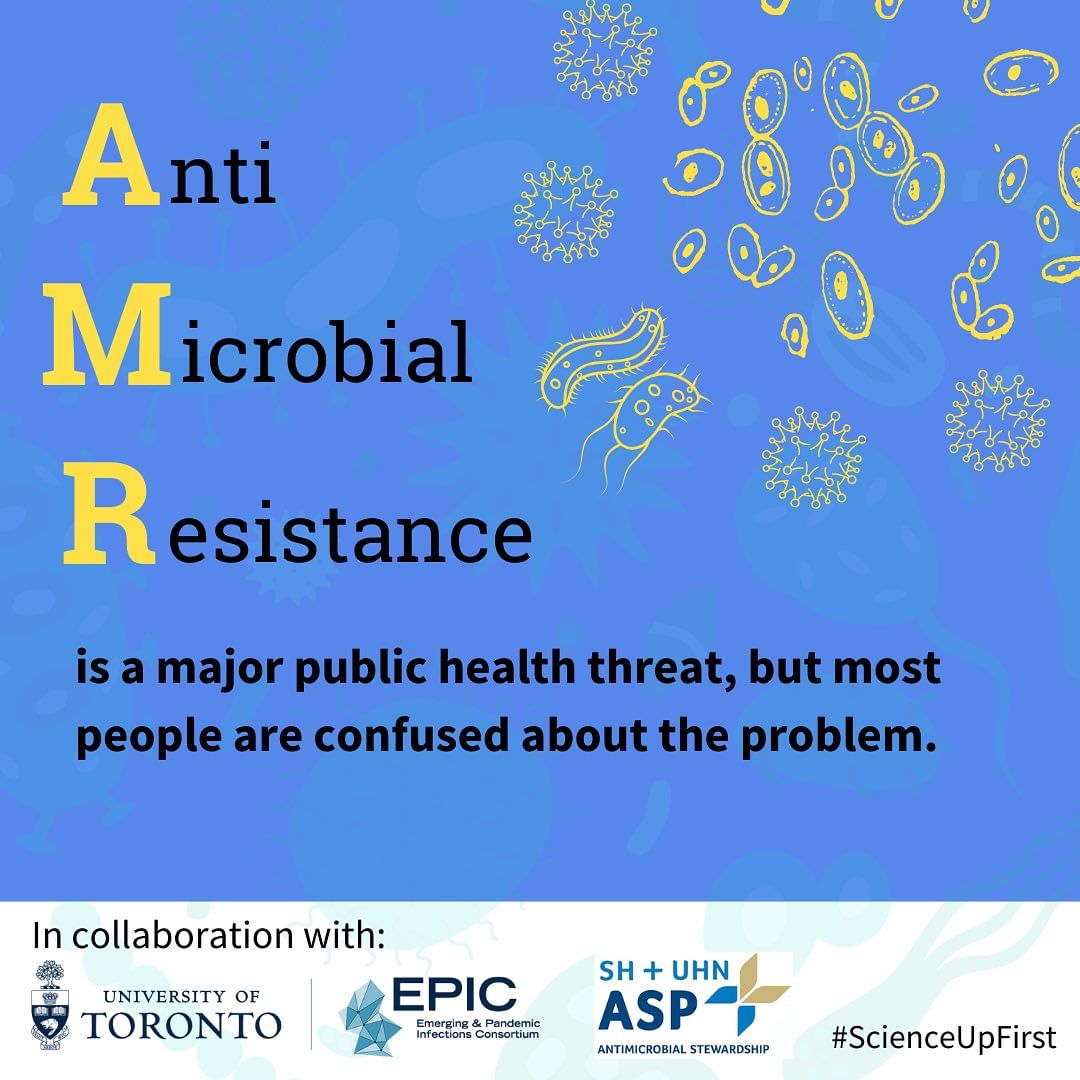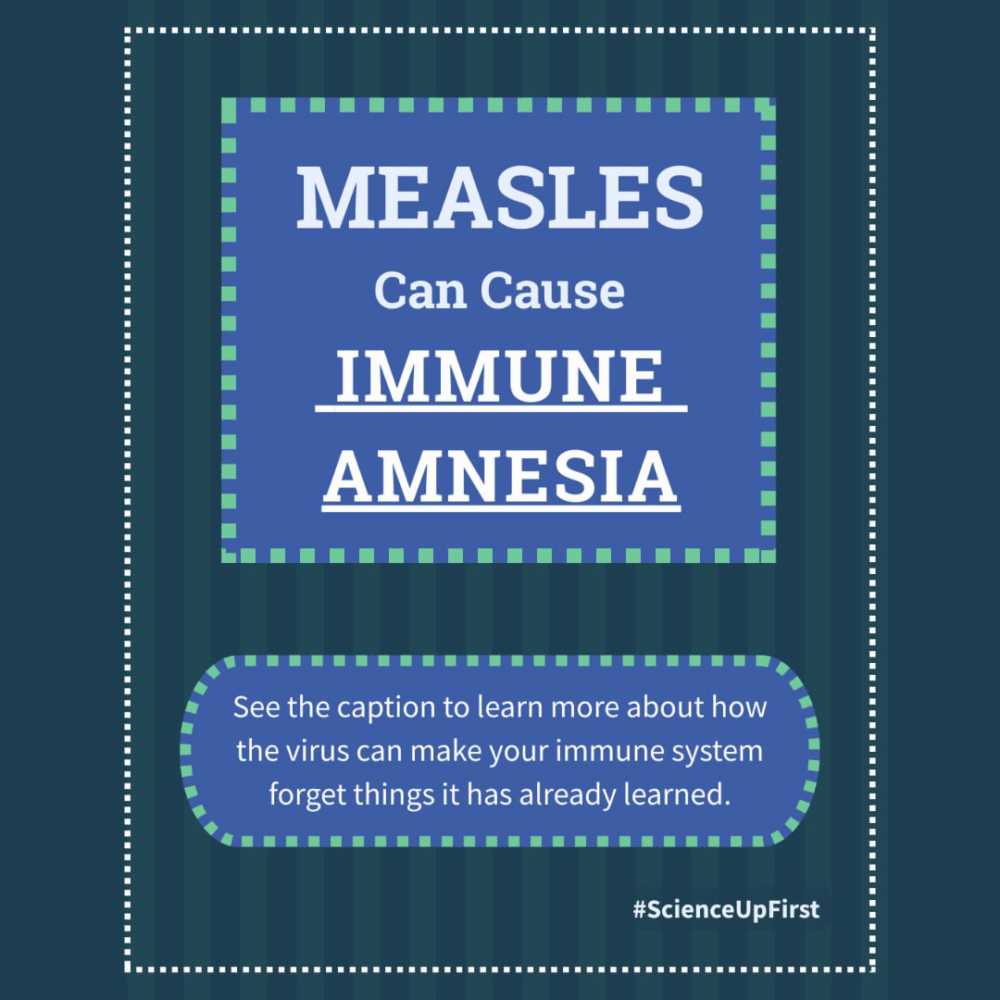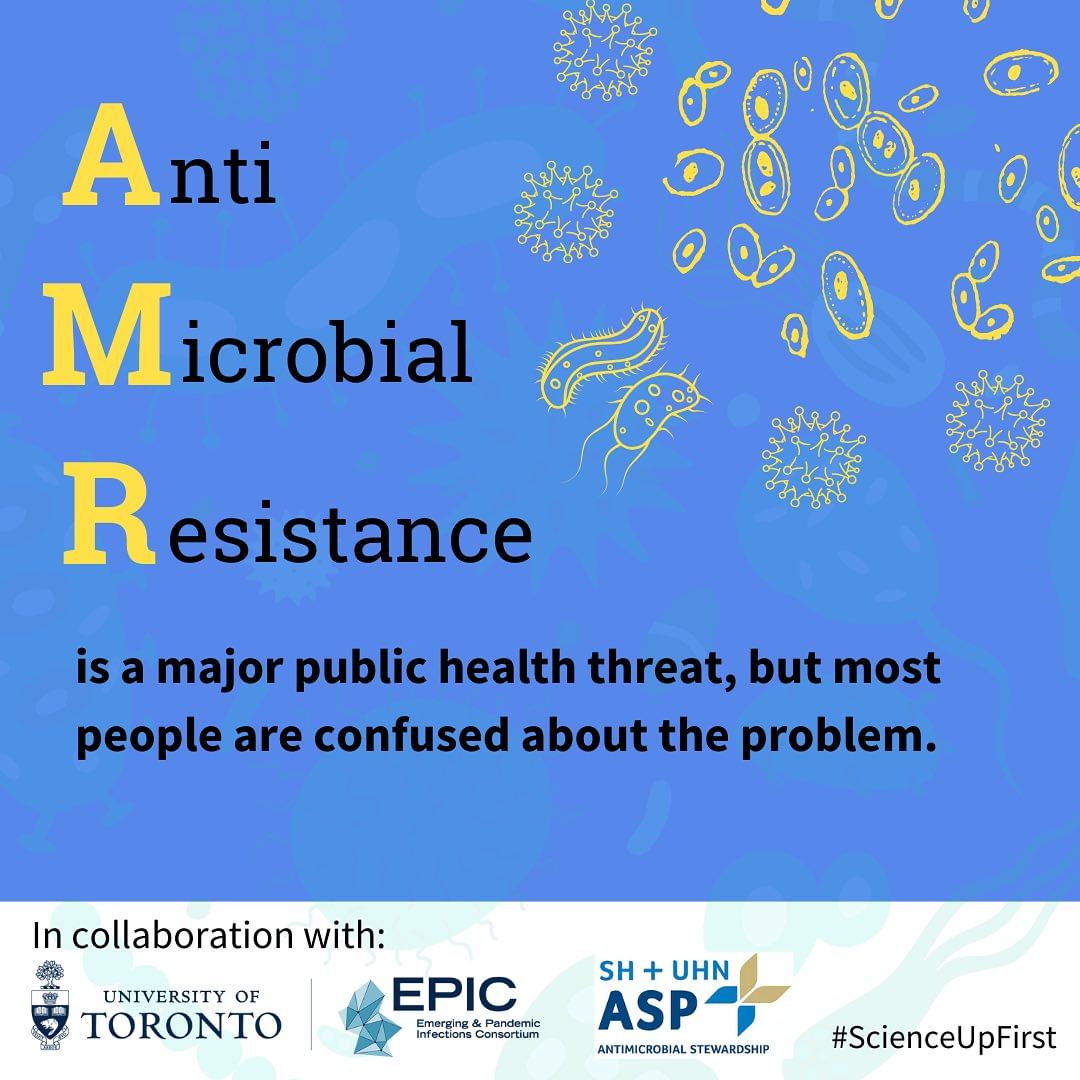
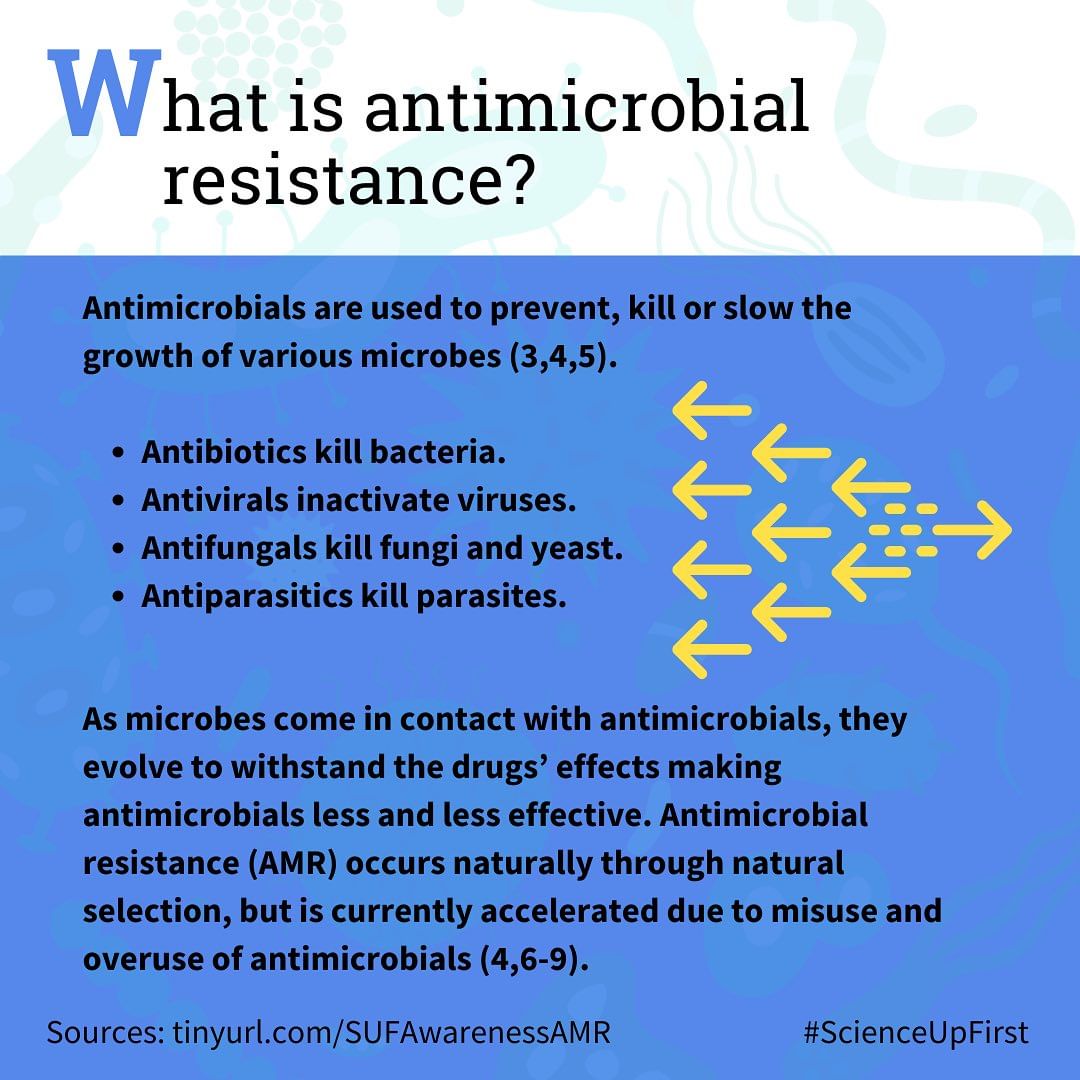
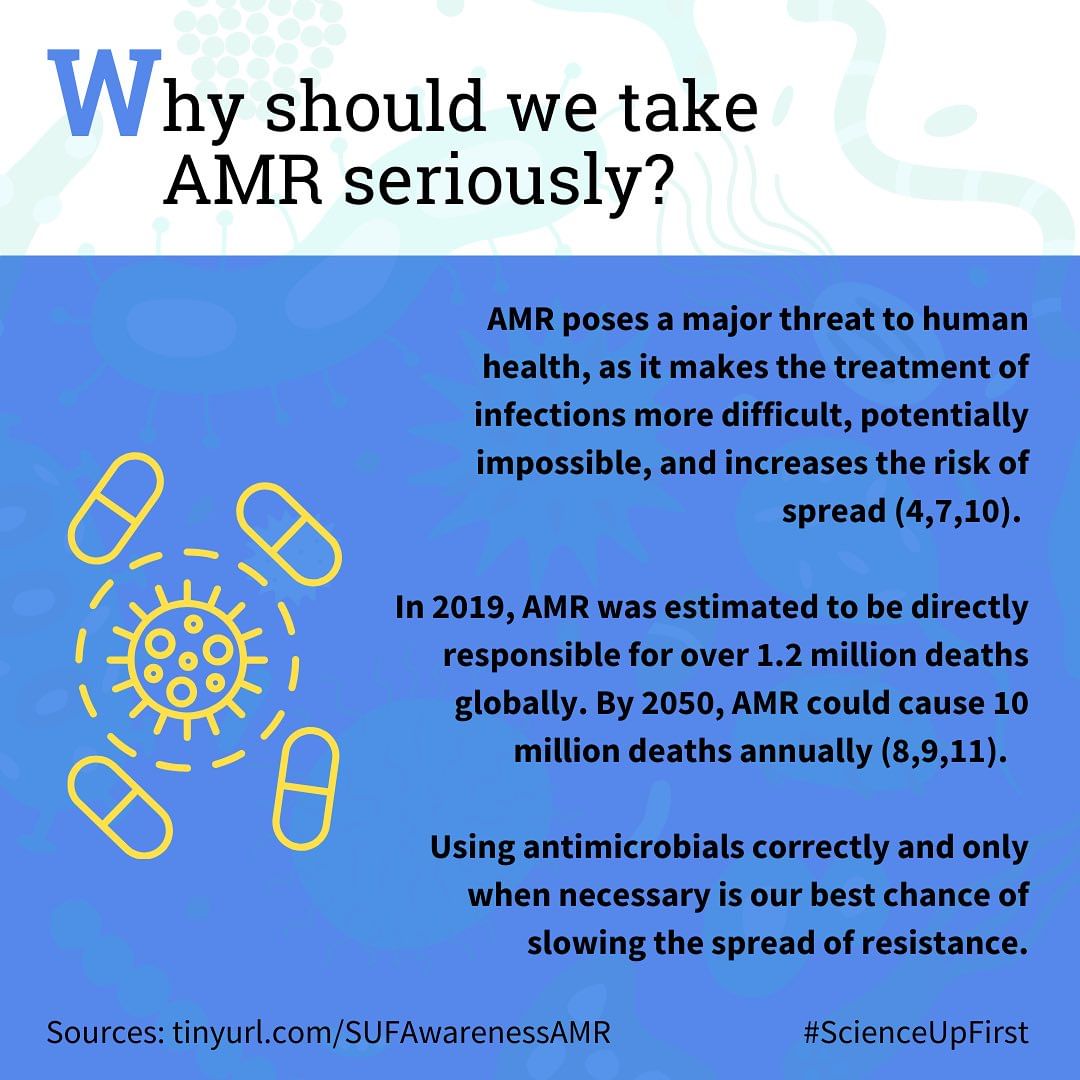

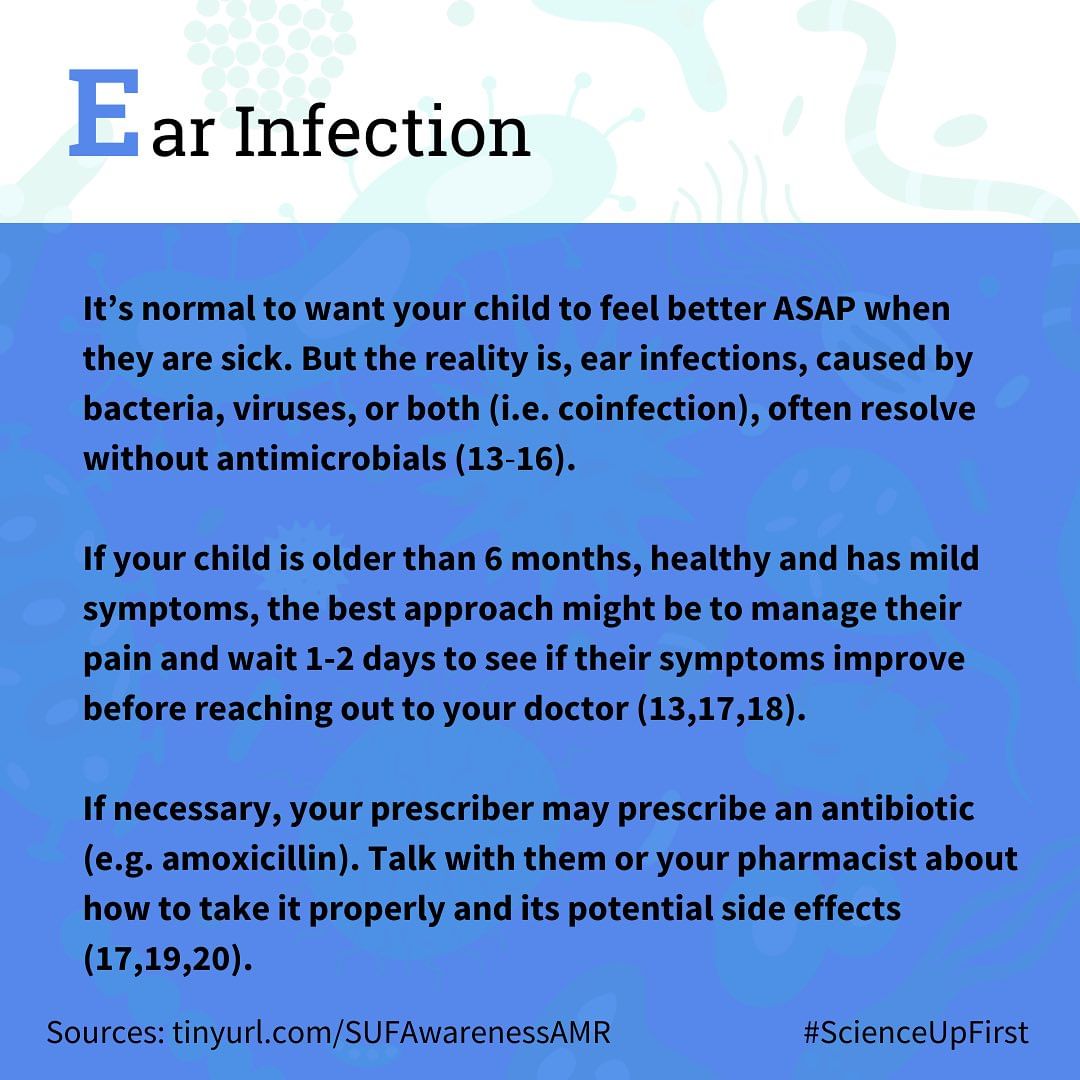
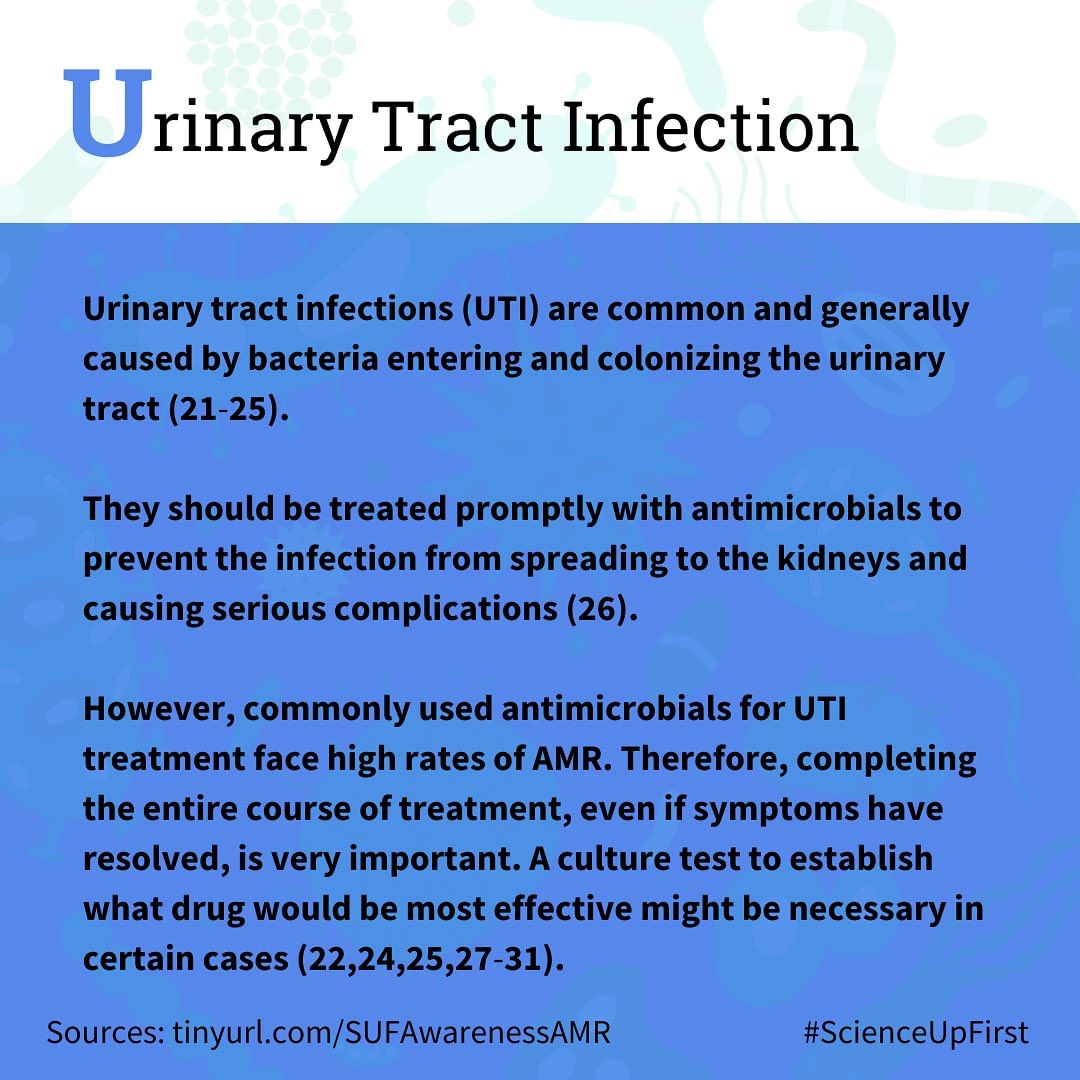
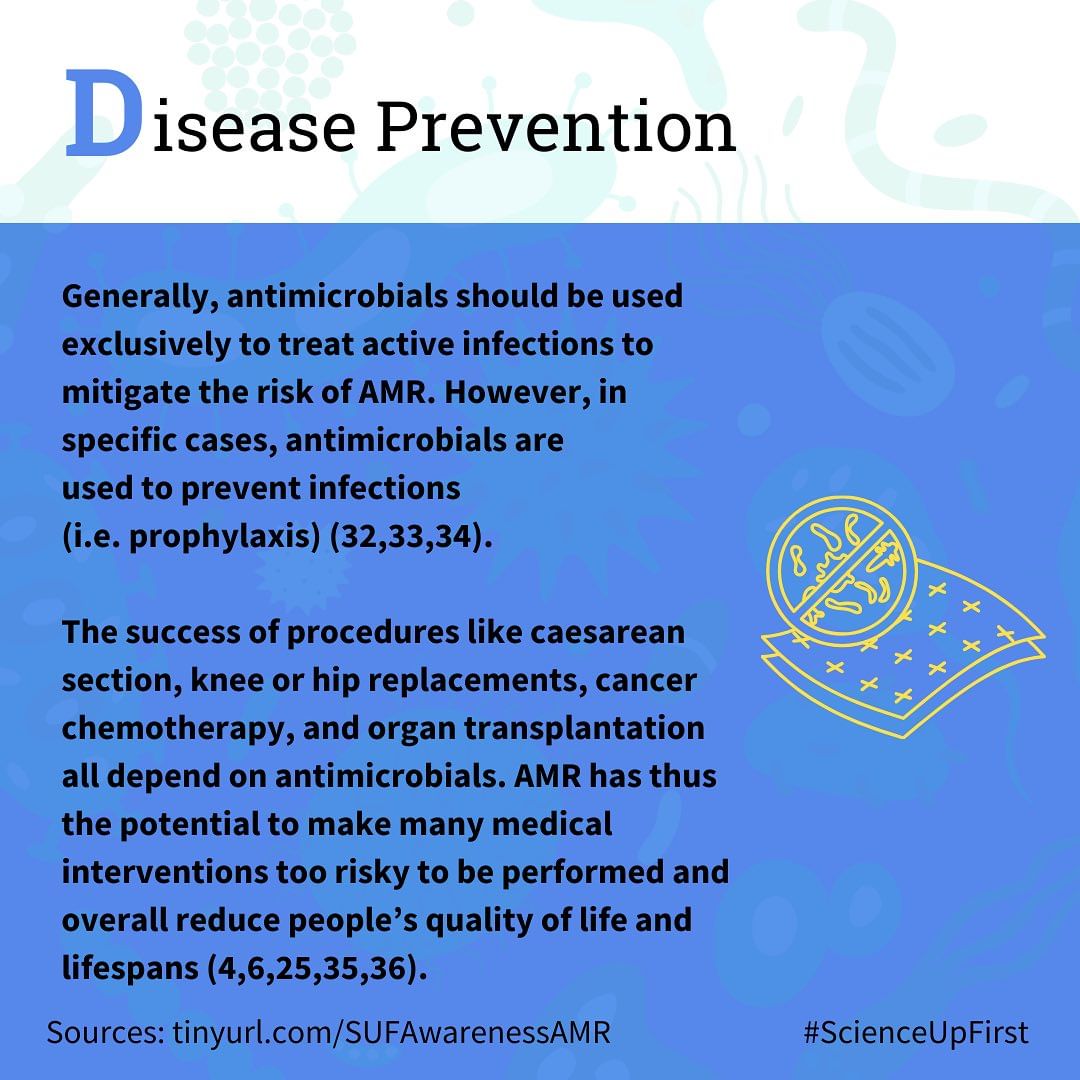
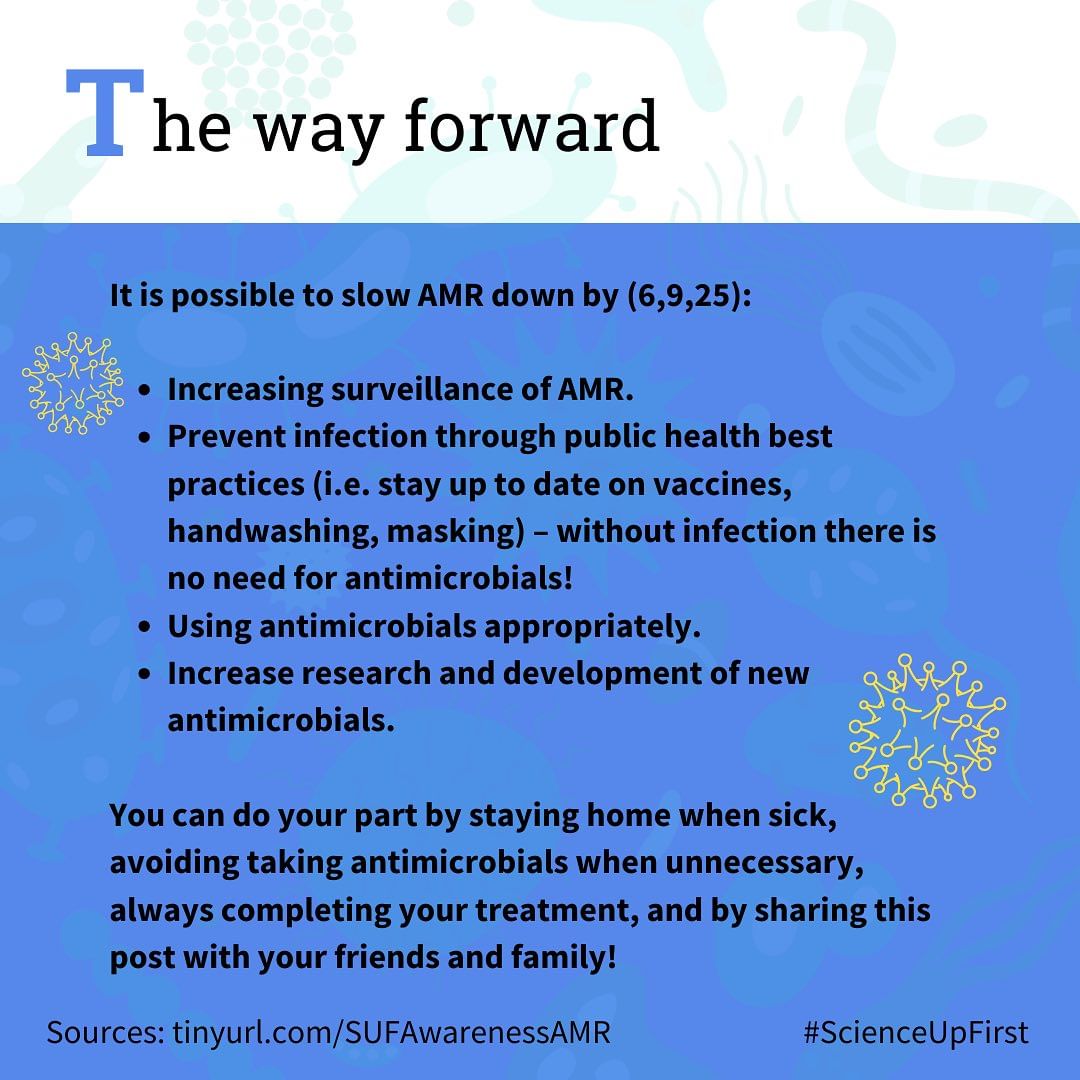
Antimicrobial resistance, or AMR, is a top ten public health threat (1).
In 2018, approximately 26% of infection-causing microbes exhibited resistance to antimicrobials used to treat them in Canada. This was estimated to result in 5,400 deaths and a 1.4 billion dollar healthcare bill that year.
Projected trends suggest resistance could escalate to 40% by 2050, contributing to a yearly estimate of 13,700 deaths and a 7.6 billion dollar impact on our healthcare system (6,24).
An increase in #AMR would also further increase (6,24):
- Inequity and inequality: Children, older adults, people living in overcrowded and/or poor housing conditions, Indigenous populations, and new Canadians are more at risk to suffer from an increase in AMR
- Stigma and discrimination: Being affected by AMR unequally, some social groups will face greater infection rates and thus could be the target of stigma and discrimination due to fear of infections.
Our best chance at slowing the spread of resistance is to first prevent infections, then avoid using antimicrobials unless it is necessary, and finally to always follow the full course of treatment* when we do use them.
You can also share this post with your friends, so that they too are aware of the challenges AMR represents for our future.
* Duration of antimicrobials courses have become shorter than they have been in the past, as they have been shown to be just as effective but with fewer side effects. It is a good idea to discuss with your prescriber and pharmacist about the most appropriate approach.
Share our original Tweet!
Antimicrobial resistance (AMR) is one of the top ten threats to public health.
We explain why here: https://t.co/dkDFLdimc8
Share it with those around you to make them aware of the challenges that #AMR represents.#ScienceUpFirst #WAAW2023 pic.twitter.com/pzvMLxJz4x
— ScienceUpFirst | LaScienced’Abord (@ScienceUpFirst) November 28, 2023
View our original Instagram Post!
View this post on Instagram
- Antibiotic Awareness | FR : Semaine mondiale de sensibilisation aux antimicrobiens
- Data Note: Public Awareness Around Antibiotic Resistance
- About antibiotics | FR : À propos des antibiotiques
- Antimicrobial resistance | FR : Principaux repères sur la résistance aux antimicrobiens
- Antimicrobials, Antimicrobial Resistance and Antimicrobial Stewardship
- When Antibiotics Fail | FR : Quand les antibiotiques échouent
- About antibiotic resistance | FR : À propos de la résistance aux antibiotiques
- Antimicrobial Resistance – Overview | FR : Résistance aux antimicrobiens : aperçu
- Pan-Canadian Action Plan on Antimicrobial Resistance | FR : Plan d’action pancanadien sur la résistance aux antimicrobiens
- Antibiotic resistance and risks to human health | FR : Résistance aux antibiotiques et risques pour la santé humaine
- Global burden of bacterial antimicrobial resistance in 2019: a systematic analysis
- Impact of antibiotics on the human microbiome and consequences for host health
- Does your child have an earache? | FR : Votre enfant souffre-t-il d’une otite?
- Let’s talk… – Ear Infection | FR : Parlons.. D’infection de l’oreille
- Acute otitis media
- Acute Otitis Media
- Management of acute otitis media in children six months of age and older
- Watchful Waiting for Acute Otitis Media
- Original Article Amoxicillin Versus Other Antibiotic Agents for the Treatment of Acute Otitis Media in Children
- Adverse Events of Antibiotics Used to Treat Acute Otitis Media in Children: A Systematic Meta-Analysis
- Urinary Tract Infections | FR : Les infections des voies urinaires
- Urinary Tract Infections | FR : L’infection urinaire – Symptômes, causes et traitement
- Uropathogenic Escherichia coli (UPEC)-Associated Urinary Tract Infections: The Molecular Basis for Challenges to Effective Treatment
- Community-onset urinary tract infections: a population-based assessment
- When Antibiotic Fail – Infographic | FR : Quand les antibiotiques échouent – Infographie
- Urinary Tract Infections in Teenagers and Adults
- Pattern of Antibacterial Resistance in Urinary Tract Infections: A Systematic Review and Meta-analysis
- State of the Globe: Rising Antimicrobial Resistance of Pathogens in Urinary Tract Infection
- Antibiotic susceptibility of urine culture specimens in Ontario: a population-based cohort study
- Guidelines for the diagnosis and management of recurrent urinary tract infection in women
- Current prescribing practices and guideline concordance for the treatment of uncomplicated urinary tract infections in women
- Antibiotic Prophylaxis in Obstetric Procedures
- Adjunctive Azithromycin Prophylaxis for Cesarean Delivery
- Duration of antibiotic therapy for common infections
- Tackling Antimicrobial Resistance and Antimicrobial Use: A Pan-Canadian Framework for Action | FR : Lutter contre la résistance aux antimicrobiens et optimiser leur utilisation : un cadre d’action pancanadien
- Antimicrobial Resistance: Tackling a crisis for the health and wealth of nations

